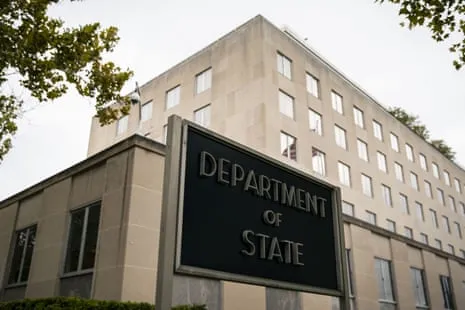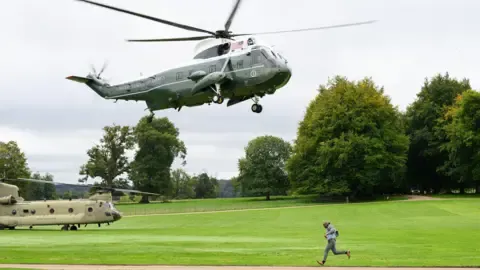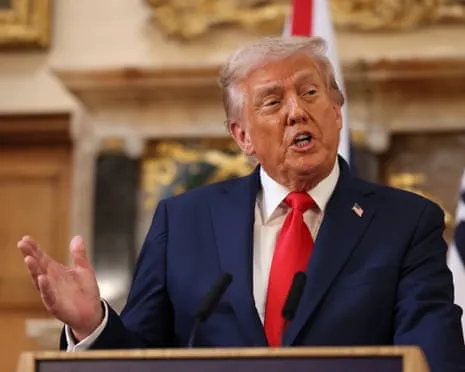



Rashford Demonstrates Rare Talent Which Teams Are Hesitant to Invest Heavily On
Recent Articles
Teflon Diet, Garlic Milk and Striped Cattle Triumph at 2025 Ig Nobel Prizes
News • April Powell • Sep 18UK Physicians Found Responsible of Inappropriate Behavior Failing to be Struck Off, Research Reveals
News • April Powell • Sep 18Today's Top Highlights
Discover the latest stories and insights from our community
 News
News
Congressional Committee Pressures Trump Administration on Combating Trafficking in Persons
 By April Powell
•
18 Sep 2025
By April Powell
•
18 Sep 2025
 News
News
Erling Haaland Joins Exclusive UCL 50-Goal Club, Praised by Pep as CR7 and Lionel Messi's Equal
 By April Powell
•
18 Sep 2025
By April Powell
•
18 Sep 2025
 News
News
Striker disrupts Newcastle's big occasion and declares: ‘I am getting better at Barcelona’
 By April Powell
•
18 Sep 2025
By April Powell
•
18 Sep 2025
 News
News
Trump Diverted and Compelled to Swap Helicopters On the Way to Stansted Airport
 By April Powell
•
18 Sep 2025
By April Powell
•
18 Sep 2025
 News
News
Norwegian Striker Haaland Fires Half-Century European Strike in Victory Over Italian Side
 By April Powell
•
18 Sep 2025
By April Powell
•
18 Sep 2025
 News
News
Doku Decorates City's Victory Against the Italian Side Following De Bruyne's Early Comeback Return
 By April Powell
•
18 Sep 2025
By April Powell
•
18 Sep 2025
 News
News
Clayton Kershaw Confirms Retirement Following The Current Season
 By April Powell
•
18 Sep 2025
By April Powell
•
18 Sep 2025
 News
News
Marcus Rashford's Brace Silences Newcastle's Celebrations and Secures Barcelona's Triumph
 By April Powell
•
18 Sep 2025
By April Powell
•
18 Sep 2025
 News
News
Outstanding Rashford Beats Newcastle United as Barcelona Claim Victory
 By April Powell
•
18 Sep 2025
By April Powell
•
18 Sep 2025
 News
News
The former president advises the United Kingdom to utilize the military’ for managing frontiers
 By April Powell
•
18 Sep 2025
By April Powell
•
18 Sep 2025
 News
News
E. Terland Treble Sends United Into Women's UCL Group Stage
 By April Powell
•
18 Sep 2025
By April Powell
•
18 Sep 2025
 News
News
Juice's Latest Installment Analysis: Mawaan Rizwan's Captivating Sitcom Arrives Like a Tidal Wave of Innovation
 By April Powell
•
18 Sep 2025
By April Powell
•
18 Sep 2025
Recent Posts
 News
News
 News
News
 News
News
 News
News
September 2025 Blog Roll
August 2025 Blog Roll
July 2025 Blog Roll
June 2025 Blog Roll
Sponsored News
 News
News
Analysis: Trump’s UK Visit Revealed Strong Relations – but Restricted Sway
 By April Powell
•
18 Sep 2025
By April Powell
•
18 Sep 2025
 News
News
The Swipe Story Film Analysis: Lighthearted Storytelling Offers Matchmaking Platforms the Creation Myth Treatment
 By April Powell
•
18 Sep 2025
By April Powell
•
18 Sep 2025
 News
News
Accepting the Reptiles in My Ceiling: A Journey from Anxiety to Fascination
 By April Powell
•
18 Sep 2025
By April Powell
•
18 Sep 2025
 News
News
The Name Behind It All Review: Ye’s Decline Creates a Grimly Engrossing Viewing Experience
 By April Powell
•
18 Sep 2025
By April Powell
•
18 Sep 2025
 News
News
Media Overseer: Federal Communications Commission Leader Amid Late-Night Host Storm
 By April Powell
•
18 Sep 2025
By April Powell
•
18 Sep 2025
 News
News
The Renowned Band Pulls Music from Spotify in Protest Against Head’s AI Military Investments
 By April Powell
•
18 Sep 2025
By April Powell
•
18 Sep 2025
